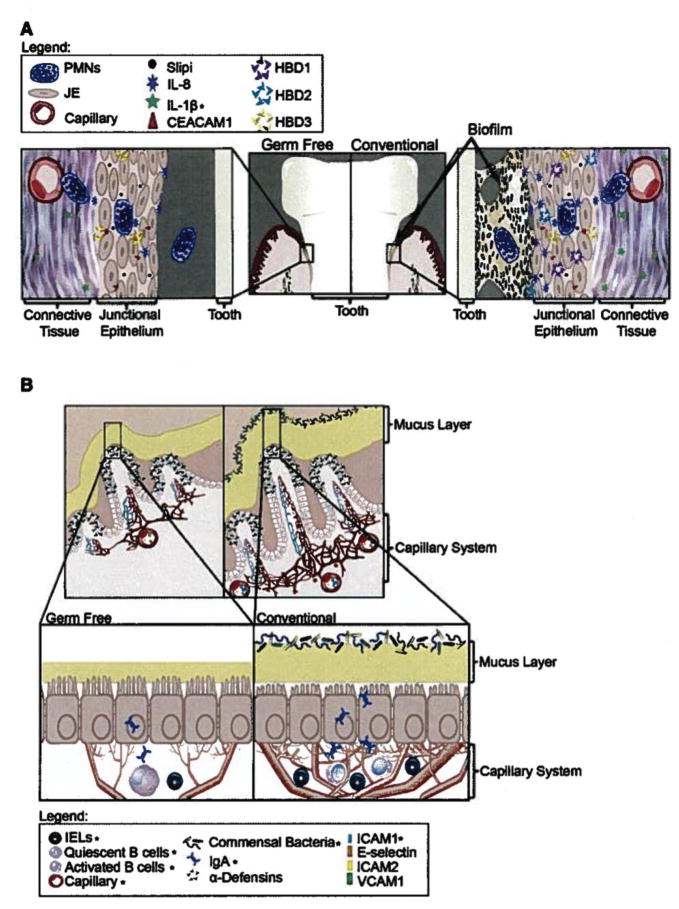Fig. 1.
(A) Current knowledge of microbial influence on the junctional epithelium based on cumulative data from human and mouse studies. The architecture of junctional epithelium and the presence of neutrophils are similar between germ-free and conventional mice. Several molecules appear to change dramatically with the addition of bacteria but many are unchanged [14]. (B) Overview of current knowledge of microbial influence on the intestinal epithelium. The architecture of the intestinal tissue is changed markedly with the addition of bacteria: the crypts are deeper, the capillary network is more extensive, the mucus layer is reduced, cilia are shorter, and many differences are seen with immune cells and molecules as indicated [32]. The figure indicates the relative location and abundance of innate immune cells/molecules (*indicates changes due to microbial interactions confirmed in germ-free studies.) Reprinted with permission from Cell Host & Microbe 10, October, 2011 ©2011 Elsevier Inc.

